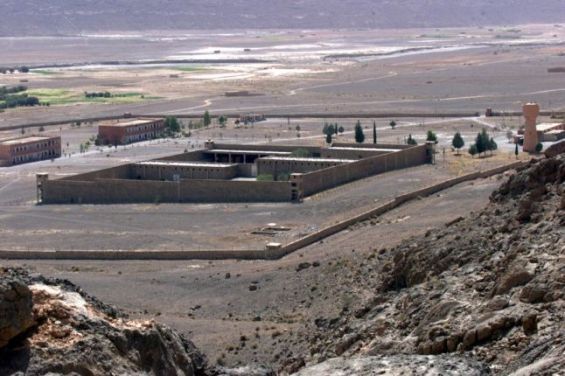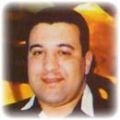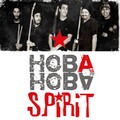Could you tell us more about on your academic and professional background?
I am an interdisciplinary scholar, working at the intersection of several disciplinary fields, including Amazigh Studies, Arabic Studies, Francophone Studies, Memory Studies, historiography, and environmental humanities. I was trained in comparative literature, a discipline that encourages experimentation and innovative thinking, which has helped me capitalize on my linguistic and disciplinary interests in very rich ways.
As a comparatist, you usually work in several languages and can engage with bodies of knowledge that area studies, which usually focuses on one language, does not accommodate. The early work that shaped my interdisciplinary interests focused on state violence and archive creation in Morocco. Reading against the grain of predominant archival theory, which assumes that archives exist, but they are inherently incomplete, my first book «Moroccan Other-Archives: History and Citizenship after State Violence» is an attempt to shift attention to the archival void in contexts beyond the Euro-American-centric realm.
It is one thing to deal with the silence of the archives and another to navigate their absence, which is the case in many non-Euro-American societies. The interdisciplinary and multilingual methodology I used to conduct the research for this first book opened my eyes to the advantages of breaking disciplinary boundaries to gain a more nuanced understanding of the questions I study. This awareness has helped me think differently about the place of Darija and Tamazight in my research and incentivized my current endeavors to rehabilitate Tamazight as a language of thought and literature by challenging the ahistorical and reductive assumptions that culture and thought in northern Tamazgha (Northwest Africa) are only produced in Arabic and French.
In your book, «Moroccan Other-Archives: History and Citizenship after State Violence», you discuss the concept of «other-archives» that offer alternative historical narratives. Could you elaborate on the characteristics that define this alternative history, and how these archives contribute to its emergence and recognition?
This book emerged from my research on the «Years of Lead», which refers to the period between Morocco's independence in 1956 and the passing of King Hassan II in 1999. As the Equity and Reconciliation Commission (ERC), which King Mohammed VI put in place in 2004, has demonstrated, this period was characterized by the excessive deployment of state violence against all dissenting voices regardless of their political ideology.

History played a central role in the discussions that unfolded during Morocco’s «decade of memory» between 1999 and 2010, but the absence of official archives posed a significant challenge for historians. This led me to explore the concept of «other-archives», which I define as being «neither academic history nor firsthand memory, nor are they conventional archives». They are loci where the stories of those who have been left out of history and traditional archives reside. Other-archives function as realms where the absented, the disappeared, the undesired return to challenge predominant conceptions of identity and citizenship while enabling the possibility of a different history than the one that has always been disseminated.
These other-archives emerged from the absence of official records during Morocco's «Years of Lead». They allow for the reimagining of post-independence history, making the act of rewriting history synonymous with exercising citizenship in Morocco. In fact, the plurality of debates and historical versions that other-archives enable is salutary for any society to avoid thinking in terms of one truth, one history, and one reality.
How does the concept of «other-archives» challenge traditional historiography, particularly in the context of post-colonial societies?
Other-archives are sources for historiographical research. They are produced by citizens who have stakes in Moroccan history. So, it is the producers of other-archives who challenge historiography. The other-archival sources they create stand in or fill the void left in history writing by the absence or inaccessibility of official records. They provide alternative sources for historical reconstruction, especially for marginalized narratives. This concept shifts focus from the incompleteness of existing archives to the creation of new historical sources, allowing for a more inclusive and diverse historical narratives. Beyond Morocco, other-archives are particularly relevant in societies where official archives may be incomplete, inaccessible, or biased towards certain histories, groups or communities.
Your book explores how cultural production commemorates marginalized voices. Can you tell us more on the types of cultural production that serve this function, and the patterns that emerge in how these silenced voices are commemorated?
«Moroccan Other-Archives» relied on an interdisciplinary and multilingual methodology to approach cultural production about Imazighen, Jews, and political prisoners. If you look at these three groups during the «Years of Lead», you will see that the common characteristic between them was silence. Although Moroccan historians produced a very scholarship during this period, most of their focus was on pre-colonial Morocco, thus leaving these topics to foreign historians and anthropologists.
For Imazighen, amateur historian-activists have produced Amazigh «other-archives» to counter their invisibilization in official discourse. Regarding Moroccan Jews, I examined what I call «al-kitāba al-dhākirātiyya» (mnemonic literature) in which Muslim novelists document Jewish life in Morocco. Mnemonic literature reflects younger Muslim Moroccans' endeavor to document and reactualize a history that has mostly remained in the older generations’ memories.

In the case of political prisoners, particularly the story of Tazmamart and Derb Moulay Cherif, cultural production extends from survivors' memoirs to theater, novels, and film. These detention centers, specifically Tazmamart, became loci of a transnational other-archive that connects Morocco to Europe and the United States, and even Egypt.
These different forms of cultural production have opened breaches in accepted historical narratives and acted as spaces for the preservation of memories that might otherwise be lost or suppressed. Hence, other-archives bring to light experiences of marginalized groups and contribute to a more inclusive understanding of Moroccan history.
In your work, you explore the connection between trauma, state violence, and these alternative archives. Can you explain the nature of this link?
The ERC's work revealed that thousands of Moroccans experienced state violence, resulting in both individual and collective trauma. This trauma extends beyond direct victims to their families and immediate communities. The mere fact that an entire society was subjected to surveillance and pressure from the authorities is traumatic. When you are aware that you may end up in jail if you say anything that could be misinterpreted is traumatic. A fascinating aspect of this trauma is also inscribed in the territory. That’s why the ERC proposed «collective reparations» to mitigate the impact of this traumatic experience on communities.
The creation of other-archives often serves as a means to process and document this trauma. In addition to archiving the psychological sequelae of state violence, other-archives serve as platform for voicing what might otherwise be unknown, forgotten, or unrecorded. They serve as both a record of traumatic experiences and a means of working through that trauma at a societal level.
 Agdez detention center. / Ph. DR
Agdez detention center. / Ph. DR
However, trauma studies remain underdeveloped in Morocco, and there's a need for more research in this area to fully understand the implications of state violence on Moroccan society. Hopefully, younger Moroccan scholars will examine trauma studies and apply to their context in a fuller and more comprehensive way.
How has the study of trauma in relation to state violence evolved in Morocco, and what challenges remain in this field?
This question requires a longer response, but we can say that while the ERC's work has shed light on the extent of state violence, trauma studies have remained marginal in Morocco. Therefore, there's a dire need for more research to understand the long-term implications of the «Years of Lead» on Moroccan society. The challenge lies in developing a nuanced understanding of collective trauma and its intergenerational effects. Someone should conduct interviews with the older and younger generations to probe how the experiences of the parents impacted the youth and how the youth are coping with the histories they inherited. This is an area where more scholarly attention is needed to fully grasp the psychological and social impacts of this period on Moroccan society.




 chargement...
chargement...












